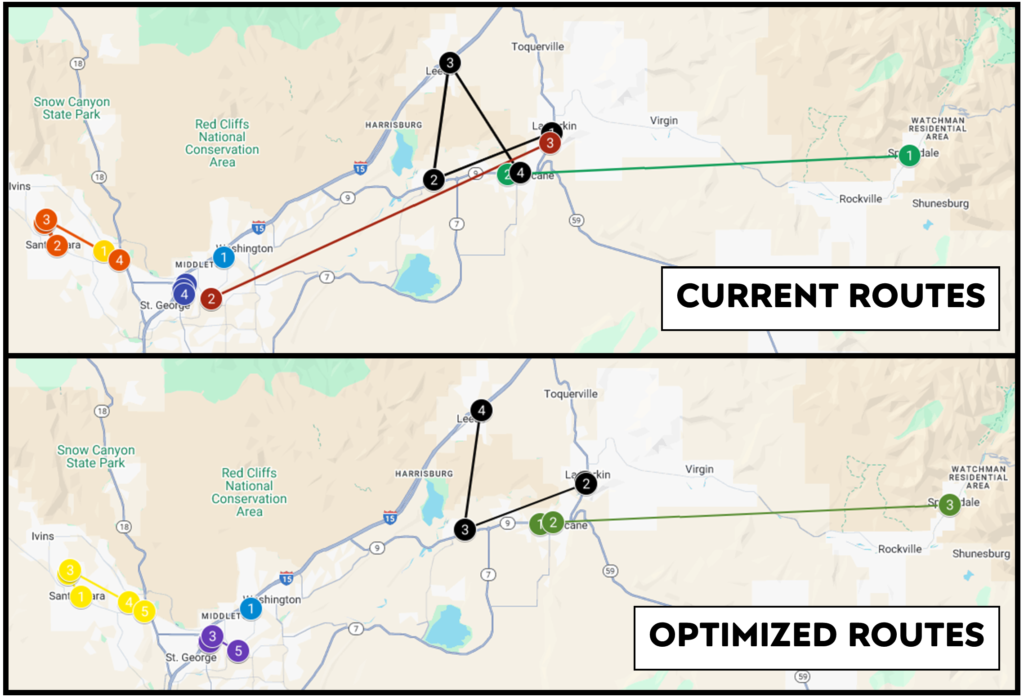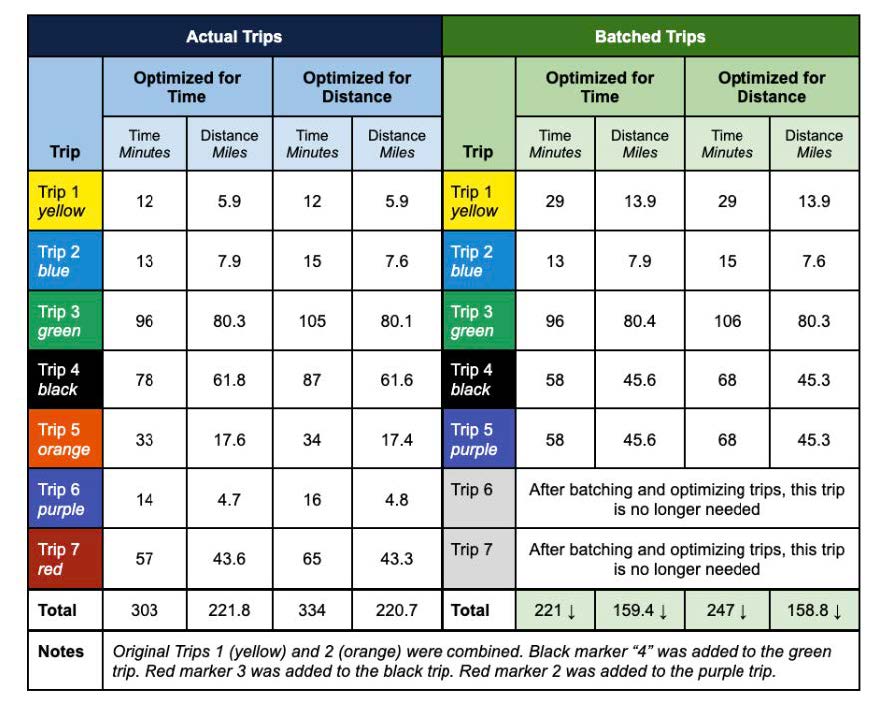We’ve all been there: the second trip to the home improvement store for a part we forgot earlier; stopping at the grocery store every day during the work week; taking a student back home because they forgot their project that’s due today. These extra trips not only come with direct costs (like fuel), but also represent the opportunity cost of time we could have spent on more meaningful activities.
The Utah Department of Agriculture and Food’s (UDAF) Regulatory Services Division recognized an opportunity to spend more time performing valuable inspections by reducing “windshield time” (a.k.a., drive time) for their inspectors, especially in rural areas. Partnering with LFA’s Operational Excellence Team and the Results Management Team from the Governor’s Office of Planning and Budget (GOPB), this most recent efficiency evaluation focused on improving the use of UDAF inspectors’ time by:
- using automated tools and existing data to optimize inspection batching and scheduling, and
- designing a “pull” system in which time-sensitive and less-predictable inspection events trigger the scheduling of nearby routine inspections.
Batching Inspections Provides Time to Focus on Critical Activities
One operational strategy that our team recommended to UDAF to reduce miles traveled and inspector time behind the windshield is using technology to optimize travel routes and batch inspections. Our report highlighted this concept by reviewing inspections that took place in Washington County in October 2024. Our team found that by using a route optimizing tool and then consolidating the optimized stops, the seven actual trips taken in that month could be reduced to five as shown in the maps below, reducing travel time and mileage by about 27% (see page 12 of the evaluation).

The impact of the optimization of routes for inspections can be seen in the table below, where two trips can be eliminated, saving roughly four hours of drive time for UDAF employees.

While the trips to inspection sites are relatively short in these examples from Washington County, more rural regions of the state, such as the Uintah Basin and central Utah where windshield time is a greater proportion of an inspector’s monthly workload, could see even greater time savings.
A companion strategy to better batching is to develop a “pull” system for routine inspections in more rural regions of the state. Redundant trips to rural areas of the state can be reduced by using time-sensitive and less-predictable inspections, like pre-operational inspections that allow a food-based business to begin operations, to trigger the scheduling of nearby routine inspections along the same route. More details about this strategy can be found on page 15 of the evaluation.
Less Driving, Reduced Backlog
Converting windshield time into increased time for inspections can also the Regulatory Services Division make progress toward a goal to reduce their backlog of past-due inspections. The growing number of registered establishments in the state, as well as the occasional need to divert inspectors to address emergencies such as food-borne illness outbreaks, can both contribute to this backlog, necessitating greater efficiency in covering the state’s inspection needs.
As of October 2024, there were at least 1,000 past-due inspections according to UDAF data. As UDAF adopts the strategies described above, as well as data-driven inspection planning and operator education, we expect that this backlog can be reduced. We estimated that adding 4-5 inspections per month to each inspector’s caseload could eliminate this backlog within 18-24 months, assuming steady staffing levels and no increase in the backlog’s growth rate.
This backlog volume is one of the data points that the Office of the Legislative Auditor General (OLAG) will be able to follow up on when they review the results of implementation over the next year. All follow-ups of efficiency evaluations and the status of implementing recommendations can be seen on OLAG’s dashboard. We look forward to seeing the results of this collaboration with UDAF and are glad to have had the opportunity to support them in their mission to ensure Utahns1’ access to a safe food supply.
- In case you missed it, it’s official: https://le.utah.gov/~2025/bills/static/SB0230.html ↩︎